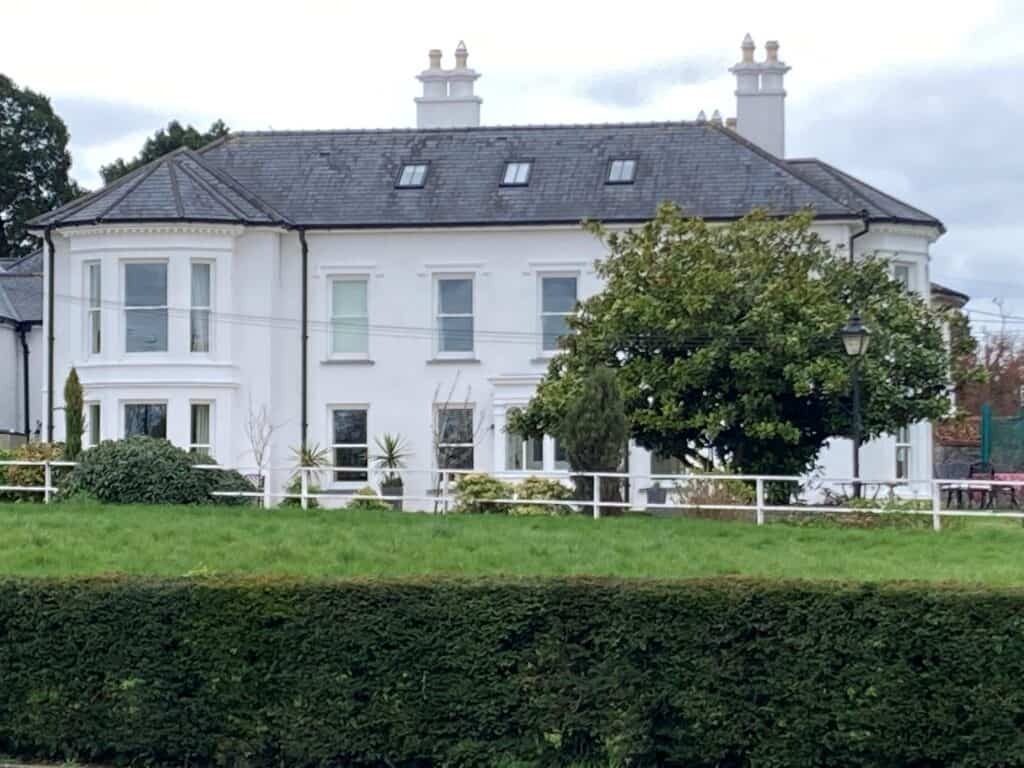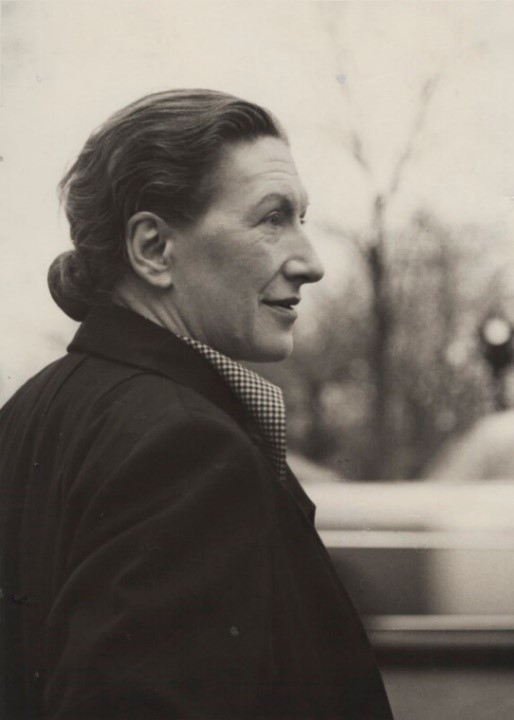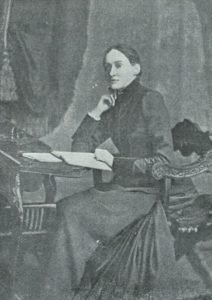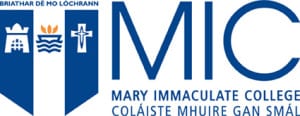Rockmahon, Blackrock Co. Cork: Family home of Novelist and Short Story writer Ethel Colburn Mayne (1865-1941)
Elke D’hoker, University of Leuven

This is Rockmahon[i], one of the original nineteenth-century properties along Castle Road in Blackrock, Cork. Built around 1820, the house is adjacent to the river Lee. It faces north towards the docks and the Tivoli hills and east towards Blackrock Castle. From 1894 to 1905, Rockmahon was the home of the writer Ethel Colburn Mayne, whose literary career took off in 1895 when a story of hers was accepted in The Yellow Book. Although Mayne is little known today, she went on to build an impressive and versatile career as a novelist, short fiction writer, biographer, reviewer and translator.
Read MoreChambers’s Journal and Irish Women Writers at the Fin de Siècle: The Case of Magdalen Rock
Alexis Easley, University of St. Thomas
From its founding in 1832, Chambers’s Edinburgh Journal strove to reach a national audience. This meant employing a corps of writers who could speak to both national and regional concerns. As David Masson noted in 1851, the Chambers brothers employed ‘Englishmen and Englishwomen, Irishmen and Irishwomen, as well as countrymen and countrywomen of their own, writers of the highest celebrity as well as aspirants whom they have helped to encourage’ (186). As I have shown elsewhere, this list of ‘aspirants’ included a large number of women writers between 1839 and 1855. The firm’s ledgers from this period reveal the identities of 136 women who contributed some 1,048 essays, stories, and poems to the journal. A disproportionately large number of these women – about 21% – were Irish.
Read MoreHope and Hunger in a Stricken Land: Jane Wilde and the Great Hunger
Christine Kinealy, Director of Ireland’s Great Hunger Institute at Quinnipiac University
This is an extract from Professor Christine Kinealy’s article ‘Hope and Hunger in a Stricken Land: the Wilde Family and the Great Hunger’ in Reading Ireland, issue 12, edited by Adrienne Leavy.
Speranza (Jane Elgee) and William Wilde, affluent members of the Protestant Ascendancy in Ireland, were both champions of the poor during the Great Hunger. Following their marriage in 1851, they achieved a celebrity status in their native country and an enviable life-style. William, a brilliant eye and ear doctor, was named as Oculist-in-Ordinary to Queen Victoria and, in 1864, was knighted for his services to the Empire, particularly for his work on various Irish censuses. Jane and William, who resided in the prestigious Merrion Square, attended many vice regal functions at Dublin Castle, the symbol of British rule in Ireland. Yet this privileged couple, in multiple ways, advocated for the Irish poor and they provided some of the most searing criticisms of the British government’s response to the Famine. Their second son, Oscar, would later use his own skills to challenge British rule in Ireland.
Read MoreThe Unravelling of Old Certainties: Elizabeth Bowen and the Search for Stability in Times of Flux
Orlaith Darling, Trinity College Dublin
In the U.S. post-script to The Demon Lover and Other Stories (1945), Elizabeth Bowen expresses the human yearning for security-in-placement:
The search for indestructible landmarks in a destructible world led many down strange paths […] The violent destruction of solid things, the explosion of the illusion that prestige, power and permanence attached to bulk and weight, left us all, equally, heavy and disembodied.[1]
Revisiting this quotation, I am struck by its relevance to the times we inhabit. While Bowen wrote the above amid the devastation of the London Blitz, the same sentiment applies to the dystopian shape of our pandemic-wracked globe. Indeed, for many of us, as for Bowen, the home has become a singular place of refuge – confined to our four walls, the importance of the home as a locus of safety (from disease or destruction) has never been more apparent than now.
Read MoreMemory, Landscape and Loss in Irish Emigrant Women’s Memoirs

Dr Sarah O’Brien, Mary Immaculate College, Limerick
In October, a woman uploaded a photo to her social media account. Taken that morning, it showed her at the edge of a hospital bed, head held in her hands. Her body, partly exposed by a drooping towel, was doubled over in grief. She had just suffered, or was in the process of suffering, a miscarriage.
Behind her, a female medic stood at a computer monitor, facing away from the camera. Against the contorted shock on the face of the patient, the medic’s gaze seemed composed, mysteriously impassive. Clinical indifference was not in question here. Rather, what the image captured was the disorientating paradox of miscarriage: its devastation and its ubiquity.
Read More‘THE EXTINGUISHED CASTLE’: ELIZABETH BOWEN’S HAUNTED HOUSE IN ‘HER TABLE SPREAD’
Dr Dawn Miranda Sherratt-Bado (Queen’s University Belfast)
Elizabeth Bowen (7 June 1899 – 22 February 1973)

Fig. 1 Elizabeth Bowen by Elliott Erwitt, 1950. National Portrait Gallery.
Elizabeth Bowen had a thing for haunted houses. They appear frequently in her oeuvre, and especially in her short stories. One such tale, the comically grotesque ‘Her Table Spread,’ from her fourth short story collection The Cat Jumps (1934), is set in a mysterious, unnamed ‘Castle,’ whose mistress hosts a dinner party which takes an extraordinarily strange turn.[i] Valeria Cuffe is an Anglo-Irish heiress in need of a husband and child to secure the future of her Castle and her line, and in this Gothic story Bowen explores the dark fantasy of Anglo-Irish ‘rule’. It is much-anthologised; for not only is it one of her best pieces of short fiction, it is also one of her handful of ‘Irish stories’. Of the eighty or so stories that Bowen published, less than a dozen are set in Ireland. Although the majority of critics have described ‘Her Table Spread’ as a haunted house tale, they have only discussed the spooky Castle in question as a generic symbol for the Anglo-Irish Big House. While the Castle does function on this level in the story, I would posit that its symbolism is far more layered and complex than critics have theorised previously.
Read MoreResearch Pioneers 12: Tina O’Toole
Tina O’Toole has been recognised as a leading scholar in Irish women’s studies since her first full-length published work, the Dictionary of Munster Women Writers, emerged in 2005 and added important names to the growing list of Irish women writers who had long been overlooked and/or understudied. O’Toole continued her excavation of under-represented Irish authors in her monograph The Irish New Woman (2013), and brought together a range of commentators on the confluence of women, writing and conflict in her co-edited volume Women Writing War: Ireland 1880-1922 (2016). Alongside a lengthy catalogue of her other published works, these texts combine to consistently question the masculine bias of Irish historiography in general and the Irish literary canon more specifically. Throughout her career, O’Toole has continued to make important feminist interventions in and correctives to the assumed landscape of Irish literature. In doing so, she has challenged perceived ideas about Irish gendered and sexual identities and has engaged in the process of introducing or reintroducing marginalised voices to national debates about these issues.
Read MoreResearch Pioneers 11: Julie Anne Stevens
Julie Anne Stevens is the leading expert in Irish literary studies on the works of the cousins Edith Somerville and Martin Ross. With two monographs on these collaborators – The Irish Scene in Somerville and Ross (2007) and Two Irish Girls in Bohemia: The Drawings and Writings of E.OE. Somerville and Martin Ross (2017), she has made an important contribution to the corpus of research on Irish women’s writing by showcasing the rich archival resources available in studying Irish women’s literary history in national and transnational contexts from the Land War to the Belle Époque. Throughout her career, Stevens has published on women writers, including Elizabeth Bowen, Mary Lavin, and Deirdre Madden. Her interests have always been on those writers who were either considered marginal or were believed to have written works in what were once deemed marginal genres, from children’s literature to ghost stories. Firmly grounded in an impressive array of archival material, her research weaves together literature and art, genre and readership.
Read MoreA Case for Editorial and Curatorial Interventions
Anna Pilz & Whitney Standlee, Network Team
In the papers of Katharine Tynan Hinkson held at the John Rylands Library in Manchester is a strongly worded letter from 1902 that attests to the difficulties that tend to assail the editors of volumes of literature. The letter in question is from Tynan’s fellow Irish writer George Egerton (Mary Chavelita Dunne), and was written to raise objections to the selection of Egerton’s works that Tynan was seeking permission to include in The Cabinet of Irish Literature, a four-volume anthology of Irish writing she was re-editing and expanding at that time. ‘I do not think it would be fair to me to merely give an extract from my first book “Keynotes,”’ Egerton wrote, ‘as that conveys the impression, in a measure, that I have not done any work equal to it […] I am willing to be represented by an extract from Keynotes and one from Rosa Amorosa.’[1] The volumes that Tynan eventually produced are remarkably varied and inclusive, and perhaps most noteworthy for the fact that they (as is noted on the title page) were ‘greatly extended by Katharine Tynan Hinkson’. Those extensions primarily consisted of introducing additional and more diverse women’s writing into the mix, but also clearly involved a measure of compromise: it is indeed one selection from Egerton’s Keynotes and another from Rosa Amorosa that appear in the final compilation.
Read MoreResearch Pioneers 10: Mary S. Pierse
Research Pioneers 10 – Mary S Pierse
Tweet
Mary S. Pierse edited, in 2010, the pioneering Irish Feminisms, 1810-1930 (Routledge). In these five volumes, she brought together 180 documents from a variety of genres that invite enticing and creative connections between historical documents, periodical press contributions, and literary texts. ‘The scale of editorial endeavour here’, Margaret Kelleher’s review of the collection notes, ‘was clearly immense and the achievement, including imaginative selections and meticulous textual detail, is warmly to be welcomed’ and goes on to refer to the timeliness of Pierse’s project: ‘Read in the context of our contemporary economic and social crises, the relevance of many of the writings collected by Pierse (including political manifestoes, crusading journalism, new educational agendas, as well as poetic and fictional reimaginings of personal and social responsibility) appears even more compelling.’ Among those many Irish women writers whose works Pierse’s retrieval efforts draws renewed attention to are M. E. Francis, Rosamund Jacob, Katherine Cecil Thurston, Rosa Mulholland and Nora Hopper.
Read More


